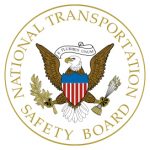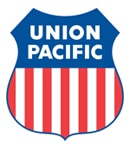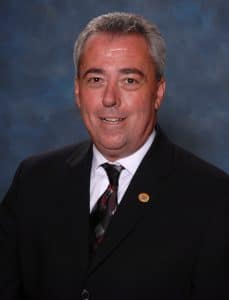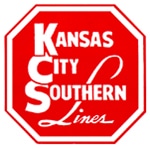RailwayAge.com reported that data released from a recent CSX customer survey shows that more than eighty percent of customer participants have experienced problems with CEO Hunter Harrison’s ‘Precision Railroading’ plan. Many CSX customers have already left and many more are considering leaving.
Harrison’s derailed attempt to shift the blame for plummeting customer approval and retention on CSX workers has been rejected by both SMART TD and CSX customers who understand that profits-first models serve no one but the executive board.
The following customer comment is one of several that are included in the article:
“There’s more to running a railroad than cutting costs to make your bottom line look better. While I haven’t transitioned any of my business yet, that doesn’t mean that I can’t or won’t.”
Click here to read the article.
Author: amyr
Reuters posted on August 1, 2017, that in an email last week to his customers, CSX CEO Hunter Harrison addressed service delays and disruptions by placing blame squarely on his employees, stating that they have been “resistant to change.”
John Risch, SMART TD national legislative director, refuted that claim and outlined the main cause of the service disruptions: Hunter Harrison.

John Risch, a spokesman for the transportation division of the SMART Union, which represents CSX operations employees, said “significant delays” had been caused by Harrison’s changes, such as doubling the size of trains and shutting down hump yards where a freight train’s cars are separated onto different tracks.
“No one is more to blame for CSX’s service disruptions than the man who ordered the dramatic changes to operations and that’s Hunter Harrison,” Risch said by email.
Read the complete article here.

Safety Alert 066 was prompted in part by the deaths of two rail workers who were struck and killed by a train in Edgemont, South Dakota, Jan. 17, 2017. The NTSB investigation found the sight distance used by the watchman/lookout was about half the distance required by federal regulations. The Federal Railroad Administration (FRA) requires that workers be able to clear the tracks at least 15 seconds before a train moving at the maximum authorized speed can pass the work location safely.
“The accident cited in this safety alert, and other recent similar accidents, warrant a reminder to railroad employees to remain vigilant for approaching trains – whether they are the watchman/lookout or whether they are working on the tracks,” said NTSB Acting Chairman Robert L. Sumwalt. “If a watchman/lookout does not devote his or her full attention to their duty of looking for approaching trains, they might not provide warning of an approaching train with sufficient time for their coworkers to clear the tracks. This alert highlights actions that when followed, will save lives railroad worker lives.’’
Railroad worker safety was previously addressed by the NTSB in its Special Investigation Report on Railroad and Rail Transit Roadway Worker Protection.
Click here to read Safety Alert 066: Watchman/Lookout: Your coworkers depend on you.

The bill provides $60.058 billion, $2.407 billion above FY2017 enacted levels, to fund the U.S. Department of Transportation, U.S. Department of Housing and Urban Development and related agencies. The bill was passed unanimously, 31-0.
The committee-passed bill places a priority on programs to improve the safety, reliability and efficiency of the nation’s transportation system, including increased funding for the TIGER grant program. The measure also emphasizes rental assistance and community development, providing funding for the Community Development Block Grant, HOME, and other programs.
“Our economy and the well-being of the American people benefit from responsible investments in American infrastructure and community development. This bill continues federal funding to support these objectives,” said Appropriations Committee Chairman Thad Cochran (R-Miss.). “Senators Collins and Reed have worked to balance national priorities within budget constraints. I am pleased to recommend this bill to the Senate.”
“This bipartisan bill is the product of considerable negotiation and compromise, and makes the necessary investments in our nation’s infrastructure, helps to meet the housing needs of the most vulnerable among us and provides funding for economic development projects that create jobs in our communities,” said U.S. Senator Susan Collins (R-Maine), chairman of the Senate Transportation, Housing and Urban Development Appropriations Subcommittee. “Our bill strikes the right balance between thoughtful investment and fiscal restraint, thereby setting the stage for future economic growth.”
Transportation Funding Highlights:
Transportation – $19.47 billion in discretionary appropriations for the U.S. Department of Transportation for fiscal year 2018. This is $978 million above the FY2017 enacted level.
• TIGER Grants – $550 million, $50 million above the FY2017 enacted level, for TIGER grants (also known as National Infrastructure Investments).
• Highways – $45 billion from the Highway Trust Fund to be spent on the Federal-aid Highways Program, consistent with the FAST Act. The bill also continues to allow State Departments of Transportation to repurpose old, unused earmarks for important infrastructure projects.
• Aviation – $16.97 billion in total budgetary resources for the Federal Aviation Administration (FAA), $563 million above the FY2017 enacted level. This will provide full funding for all air traffic control personnel, including more than 14,000 air traffic controllers, and more than 25,000 engineers, maintenance technicians, safety inspectors and operational support personnel.
The bill also provides $1.1 billion for the FAA Next Generation Air Transportation Systems (NextGen), and fully funds the Contract Towers program to help ease future congestion and help reduce delays for travelers in U.S. airspace. In addition, the bill rejects the proposed privatization of the air traffic control system and provides greater flexibilities for airports to make much-needed capacity improvements.
• Rail – $1.974 billion for the Federal Railroad Administration (FRA), $122 million above the FY2017 enacted level. This includes $1.6 billion for Amtrak for the Northeast Corridor and National Network, continuing service for all current routes. The bill also provides $250.1 million for FRA safety and operations, as well as research and development activities.
The bill also provides $92.5 million for the Consolidated Rail Infrastructure and Safety Improvement grants program, of which $35.5 million is for initiation or restoration of passenger rail, $26 million for Federal-State Partnership for State of Good Repair grants, and $5 million for Restoration and Enhancement grants.
• Transit – $12.129 billion for the Federal Transit Administration (FTA), $285 million below the FY2017 enacted level. Transit formula grants total $9.733 billion, consistent with the FAST Act. The bill provides a total of $2.133 billion for Capital Investment Grants (“New Starts”), fully funding all current “Full Funding Grant Agreement” (FFGA) transit projects, which is $280 million below the FY2017 enacted level.
• Maritime – $577.6 million for the Maritime Administration, $55 million above the FY2017 enacted level, to increase the productivity, efficiency and safety of the nation’s ports and intermodal water and land transportation. The Maritime Security Program is funded at $300 million.
The bill includes $32 million for State Maritime Academies (SMAs), and an additional $50 million for the National Security Multi-Mission Vessel. This training ship is essential for the SMAs to continue to provide the nation with a strong merchant marine workforce.
• Safety – The legislation contains funding for the various transportation safety programs and agencies within the U.S. Department of Transportation. This includes $908.6 million in total budgetary resources for the National Highway Traffic Safety Administration and $744.8 million for the Federal Motor Carrier Safety Administration. Of this amount, $68 million is to complete the modernization of border facilities to improve inspections along the Southern border. The bill also includes $272 million for the Pipeline and Hazardous Materials Safety Administration to help address safety concerns related to recent pipeline and crude oil by rail accidents.
Click here to read the full press release from the U.S. Senate Committee on Appropriations.

This past June, Senator Fischer introduced the Railroad Advancement of Innovation and Leadership with Safety (RAILS) Act – a legislative initiative aimed at rolling back rail safety requirements including electronically controlled pneumatic (ECP) brakes.
If that isn’t disturbing enough, Senator Fischer is the chair of the Senate Surface Transportation Subcommittee.

Connecticut Governor Dannel Malloy announced that TransitAmerica Services and Alternate Concepts (TASI/ACI) have been named as the joint service providers for the venture. Officials noted that Amtrak service in those areas will not be affected.
Read the complete article here.

Click here to read more from Union Pacific.

Soon, you won’t need to worry about someone obtaining your personal information from your Medicare card. Starting in April 2018, the Centers for Medicare & Medicaid Services (CMS), in conjunction with the RRB, will begin issuing new cards with a ‘Medicare Beneficiary Identifier’ or MBI. These cards will be sent in phases to existing Medicare beneficiaries, and by April 2019, all Medicare/Railroad Medicare cards will be free of personally identifiable information. This includes the removal of the gender and signature line.
Here is what an MBI will look like:
- It will have 11 characters
- The numbers will be generated randomly. Medicare considers them ‘non-intelligent’ numbers that don’t have any hidden or special meaning
- It will be unique to each patient
- It will contain capital letters (all letters with the exception of S, L, O, I, B and Z) and numbers (0-9)
- The 2nd, 5th, 8th, and 9th characters will always be a letter, while
- Characters 1, 4, 7, 10, and 11 will always be a number, and
- The 3rd and 6th characters will be a letter or a number
- There will be no dashes in the numbers on the card
To learn more about the layout of an MBI, please visit this CMS webpage: https://www.cms.gov/Medicare/New-Medicare-Card/Understanding-the-MBI-with-Format.pdf.
As you may have experienced, providers can’t always tell the difference between an SSN patient and a RRB patient. They may submit your claims to regular Medicare, instead of Railroad Medicare. To help providers know what patient they have, the new cards will have the RRB logo on them when applicable, so your doctor’s office will know where to submit claims.
This October, you will receive your 2018 Medicare & You handbook, which will contain additional information about the MBI change.
If you have a question about a claim, you may call Palmetto GBA’s Beneficiary Contact Center at 800-833-4455, or for the hearing-impaired, call TTY/TDD at 877-566-3572. Customer Service Representatives are available Monday through Friday, from 8:30 a.m. until 7 p.m. ET. You’re also encouraged to visit Palmetto’s website at www.PalmettoGBA.com/RR/Me.
CSX

Revenue: Increased 8 percent to $2,933 million
Operating Income: $958 million, up 14 percent
Operating Ratio: 67.4 percent, down from 68.9 percent
Click here to read CSX’s full earnings report.
KCS
Net Earnings: $135 million or $1.27 per diluted share, up from 2016 second quarter’s reported $121 million or $1.11 per diluted share
Revenue: Record second quarter revenues of $656 million, a 15 percent increase from the second quarter of 2016
Operating Income: All-time record of $239 million, an increase of 9 percent from the second quarter of 2016
Operating Ratio: 63.5 percent, a 2.2 increase from second quarter 2016
Click here to read KCS’s full earnings report.
CP
Net Earnings: Rose 46 percent to C$480 million or C$3.27 per diluted share (a second 
Revenue: C$1.64 billion, up 13 percent
Operating Income: A second-quarter record of C$679 million, up 23 percent
Operating Ratio: Improved 330 basis points to a second quarter record of 58.7 percent
Click here to read CP’s full earnings report.
UP
Net Earnings: $1.2 billion or $1.45 per diluted share (a second quarter record), as 
Revenue: Up 10 percent to $5.3 billion
Operating Income: Up 21 percent to $2.0 billion
Operating Ratio: A second quarter record of 61.8 percent, a 3.4 point improvement compared to the second quarter 2016
Click here to read UP’s full earnings report.
CN

Net Earnings: Increased 20 percent to C$1,031 million and diluted earnings per share increased 24 percent to C$1.36
Revenue: Increased 17 percent to a quarterly record of C$3,329 million
Operating Income: Increased 16 percent to C$1,495 million
Operating Ratio: Increased 0.6 points to 55.1 percent
Click here to read CN’s full earnings report.
NS
Net Earnings: Up 23 percent to $497 million while diluted earnings per share increased 26 percent to $1.71
Revenue: Increased 7 percent to $2.6 billion
Operating Income: Up 15 percent year-over-year to $888 million
Operating Ratio: An all-time record at 66.3 percent
Click here to read NS’s full earnings report.
Note: Operating ratio is a railroad’s operating expenses expressed as a percentage of operating revenue, and is considered by economists to be the basic measure of carrier profitability. The lower the operating ratio, the more efficient the railroad.



